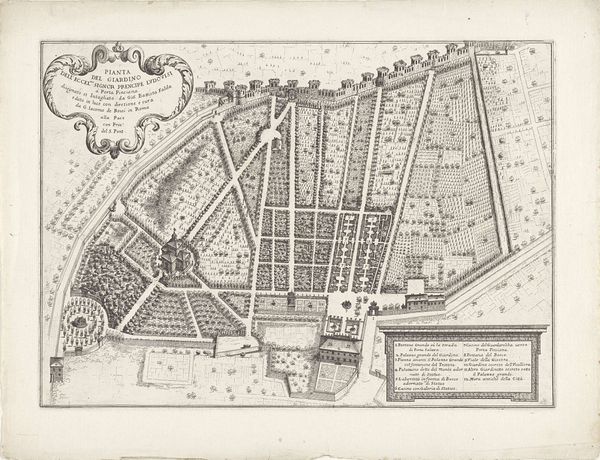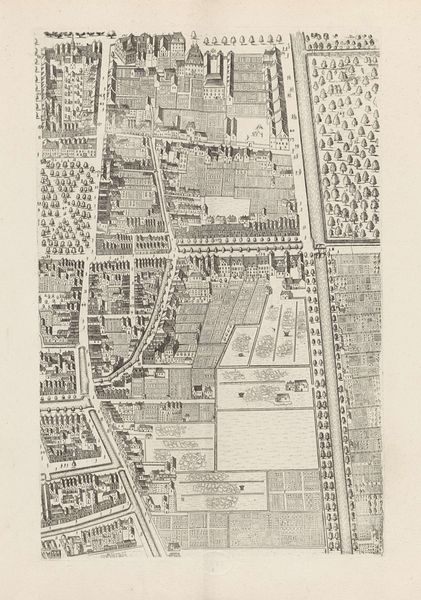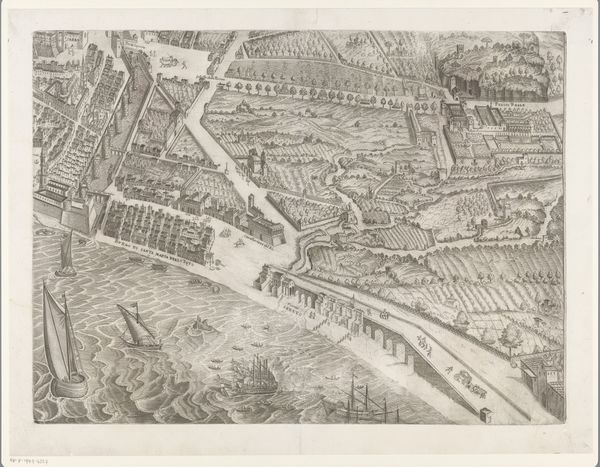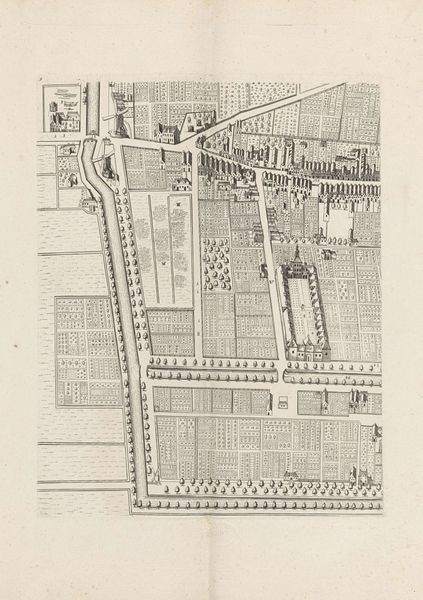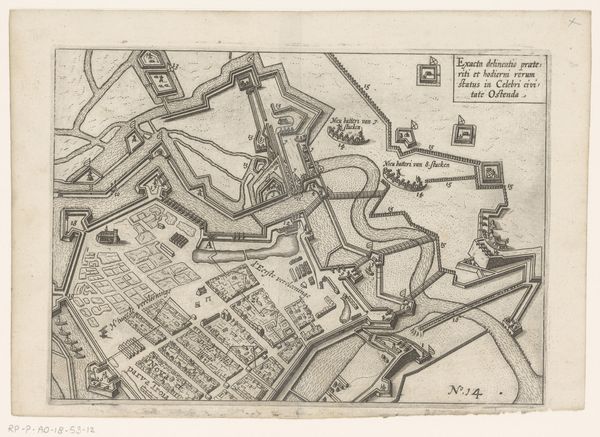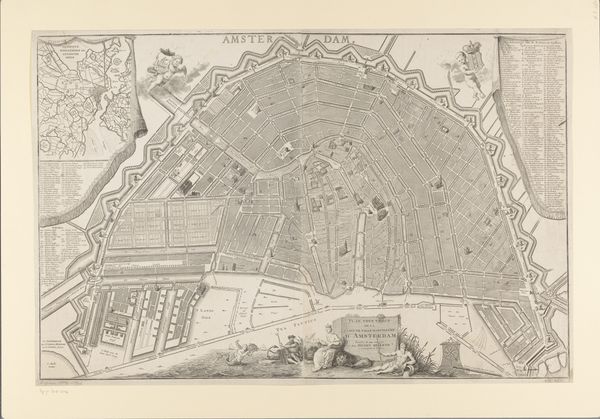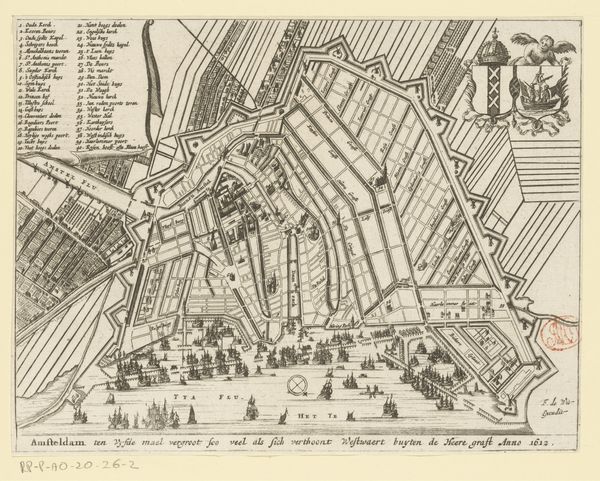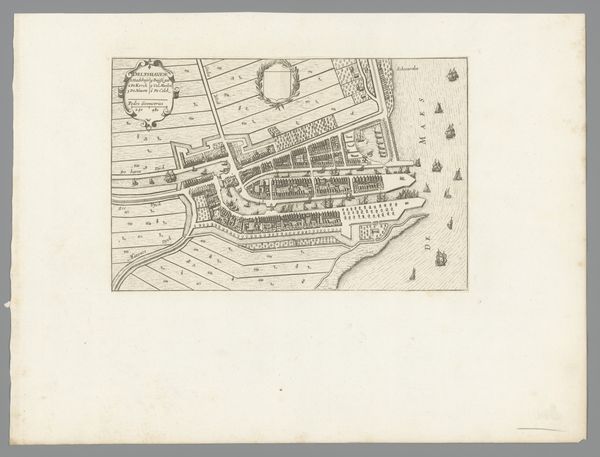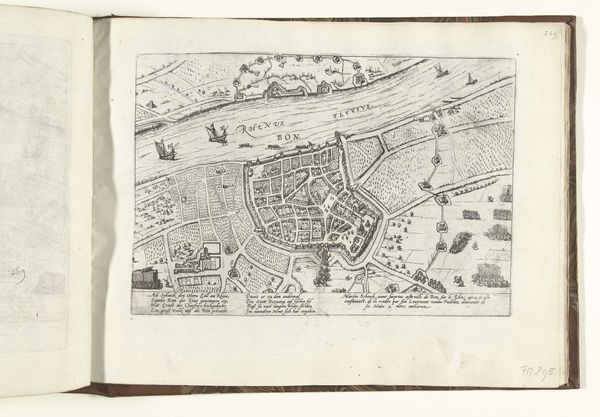
Plattegrond van de tuin en wijngaard van paus Sixtus V en de tuin van kardinaal Paolo Savelli 1683
0:00
0:00
drawing, etching
#
drawing
#
baroque
#
etching
#
landscape
#
geometric
#
cityscape
Dimensions: height 279 mm, width 444 mm
Copyright: Rijks Museum: Open Domain
Giovanni Battista Falda etched this plan of the vineyard and garden of Pope Sixtus V and Cardinal Paolo Savelli in the late 17th century. Observe the garden’s geometric symmetry and the rigid order imposed upon nature. These elements, while reflecting Renaissance ideals of harmony and control, also resonate with ancient symbolic forms. Consider the labyrinth, a motif found in classical mythology, which mirrors the complex, often confusing paths of human life. It reappears in these Renaissance gardens as a network of paths, designed not just for aesthetic pleasure but to evoke contemplation. The garden, therefore, becomes a stage for the human drama, a place where one can get lost, reflect, and perhaps, find oneself again. Through the ages, the motif of the garden has shifted from a sacred space to a secular one, yet the underlying themes of paradise, introspection, and the human relationship with nature endure. This etching, like the gardens it depicts, is an invitation to explore the cyclical dance between nature, culture, and the enduring human spirit.
Comments
No comments
Be the first to comment and join the conversation on the ultimate creative platform.
